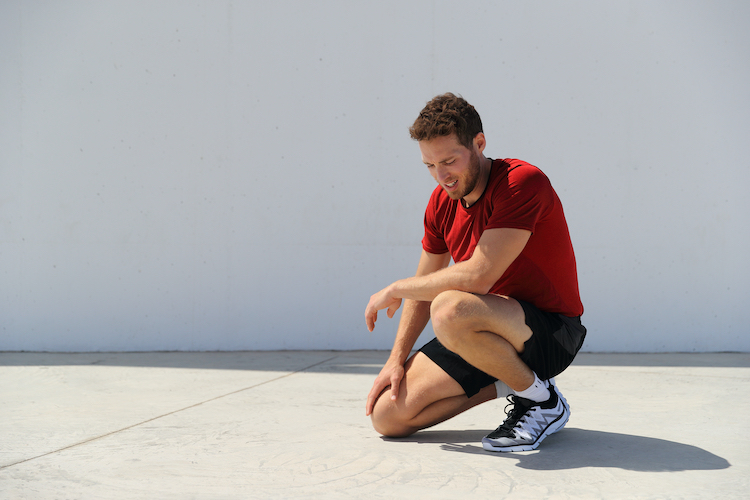For many of us, our new year fitness resolutions for 2025 may already have fallen by the wayside. The path to better fitness every new year tends to be littered with good intentions, but also with unattainable or unrealistic goals. More often that not these stories are of failure or frustration rather than success.
For others, perhaps with more realistic goals, long-term changes may well be taking shape. Others still will be mid-way through health challenges such as Dry January or the 75-day health kick, 75 Hard. Taking social media by storm, 75 Hard involves sticking to a healthy diet with no cheat meals or alcohol for – you guessed it – 75 days.
On each of the 75 days, decreed its inventor Andy Frisella in 2019, you also have to do two 45-minute workouts, one of them outside, as well as drink more than three litres of water and read 10 pages of a non-fiction book.
Is 75 Hard just too hard?
We talked to Alex Hind, CEO and co-founder of wellness experience platform Heka, about 75 Hard and other extreme fitness resolutions – and whether they can actually work.
MF: So why are we all so consumed by extreme fitness resolutions?
AH: Our culture tends to glorify extremes – whether in fitness, diet, or lifestyle. This is often driven by the idea that fast, dramatic changes are the only way to see results, and is exacerbated by social media making comparison easier than ever.
That ‘new year, new me’ messaging is as strong as ever, and people get swept up in quick-fix promises from influencers, fitness challenges and weight loss programs that focus on the outcome, not the process. The appeal of extreme resolutions like ‘getting fit in 30 days’ or completing a hardcore challenge like 75 Hard is strong because they offer a sense of urgency and a concrete endpoint.

But the truth is that extreme resolutions are unsustainable and set us up for disappointment. The pressure to achieve radical transformations can create feelings of inadequacy when we inevitably fall short or burn out.
The reality is, most people will struggle with extreme goals. Lasting change comes from internal motivation, not external validation. When exercise shifts from something you ‘should’ do to something you want to do, that’s when real and sustainable change begins.
Setting us up to fail
The 75 Hard challenge – as the name suggests – is pretty hardcore. Doesn’t this (and others) just set people up to fail?
Yes, the 75 Hard challenge is intense. Inevitably, there will be some who manage the entire challenge, but the majority of people find this kind of intensity difficult to maintain around work and life commitments. It’s an example of the ‘all-or-nothing’ mentality that is prevalent in the fitness world, and so much more attainable for trainers and influencers whose job it is to work out.
The challenge itself isn’t inherently the problem – it’s just 2025’s trend fitness phenomenon much like how HYROX has become the word on everyone’s lips. In fact, the 75 Hard challenge includes valuable elements, such as the requirement for one outdoor workout, which often translates to running for most participants. The real question isn’t about the challenge’s difficulty, but rather how individuals approach and integrate it into their broader fitness journey.
Whether or not you complete it, the post-challenge crash often leads to burnout or discouragement once it’s over. When the extreme regimen ends, people often struggle to transition back into a sustainable routine. This boom-and-bust cycle doesn’t promote long-term health — it’s about short-term gratification that may not align with one’s real, long-term fitness and health goals.
Boom and bust fitness cycles
Is this boom-and-bust cycle in searching for wellness just aggressive short-termism?
The boom-and-bust cycle is a classic pattern in the wellness world. People get super motivated by a new challenge, a quick-fix diet, or a trendy workout plan, and they dive in headfirst. This might lead to rapid initial results, but the intensity often isn’t sustainable. Once the motivation wanes or life gets in the way, people fall off track, feeling defeated or guilty. They might then start a new program, hoping it’ll work better, only to face the same cycle again. This pattern is driven by an obsession with fast results, not by an understanding of what is truly healthy and sustainable. The problem with this aggressive short-termism is that it disregards the fact that real health is about consistency over time, not just hitting a goal and moving on to the next thing.
This short-term mindset isn’t unique to fitness. It’s reflected in how we consume everything today. Like how TikTok delivers instant dopamine hits compared to waiting weekly for your favourite TV episodes, we’ve become conditioned to expect immediate results in all aspects of life. But fitness doesn’t work that way. It’s a long, challenging process that requires something more fundamental than just “finding time”. When you shift your mindset to actively making time for fitness, you’re more likely to maintain consistency and avoid falling off track.

Realistic expectations
How can people build more sustainable and achievable fitness goals?
Sustainable fitness goals are rooted in gradual, incremental progress. While starting gradually is often recommended, our brains aren’t wired that way anymore. The key is to focus on consistency, not intensity. Start with something achievable, like moving more every day or setting a moderate exercise routine that you can do consistently. Instead of aiming for a drastic body transformation in 30 days, think about fitness as a lifelong journey. Setting small, measurable and realistic goals – such as walking 10,000 steps a day or doing 15-minute workouts a few times a week – can keep you motivated without overwhelming you. Over time, these habits can be built upon, and you’ll see lasting results. It’s important to also understand that fitness isn’t just about physical appearance – it’s about how you feel and the overall impact on your health.
Set small, measurable goals
What are the physical and mental benefits of doing this?
We know that healthy people are more productive, but that doesn’t mean you need to be marathon-fit to achieve anything. When you focus on sustainable habits, the physical benefits are both immediate and long-term. You’ll likely see improvements in your strength, cardiovascular health, and flexibility, and as a result, you’ll feel more energized and capable. Consistency in movement also lowers your risk of chronic diseases like heart disease, diabetes, and obesity.
Mentally, consistent physical activity promotes the release of endorphins – your body’s natural mood lifters. Regular movement can also help reduce symptoms of anxiety and depression, improve your sleep, and boost self-esteem. A sustainable approach allows you to be kind to yourself, creating positive, reinforcing cycles that improve both your body and mind, rather than leaving you feeling depleted or guilty.
Taking a different approach
Why is it better to take fitness goals outside of time-frame commitments?
Time-bound goals such as losing 20lb in 30 days are not only unrealistic but can put unnecessary pressure on you to achieve results quickly. Fitness should be viewed as a long-term commitment to your health and wellbeing, not a race to reach a certain target by a specific date. By focusing on progress, rather than a fixed deadline, you allow for more flexibility and can build a routine that works for your life – making it far easier to maintain long-term.
Ultimately, we believe that the healthiest path is one rooted in balance, consistency and self-compassion. It’s not about achieving a ‘perfect’ body or following the latest fitness trend but about creating habits that promote long-term health and happiness. Finding ways to make fitness enjoyable will go miles in making it a natural part of your lifestyle.
Sustainable fitness
How can a platform like Heka help?
When it comes to sustainable fitness and wellbeing, having the right support system makes all the difference. Heka recognises that everyone’s wellness journey is unique: what works for one person may not work for another. By providing employees with the freedom to choose from a wide range of wellbeing options, from nutrition advice to mental health support, it removes the one-size-fits-all approach that often leads to disengagement.
This flexibility is particularly valuable because it treats employees like individuals with distinct needs and preferences. Rather than prescribing a single path to wellness, it empowers people to explore and find what genuinely works for them.
This personalised approach not only increases engagement but also leads to a better return on investment for both employees and organisations. When people can choose benefits that align with their goals, they’re more likely to use them effectively and consistently.
Heka is a flexible employee benefits platform with more than 5000 unique wellbeing experiences, products and services for companies’ employee benefits schemes.






